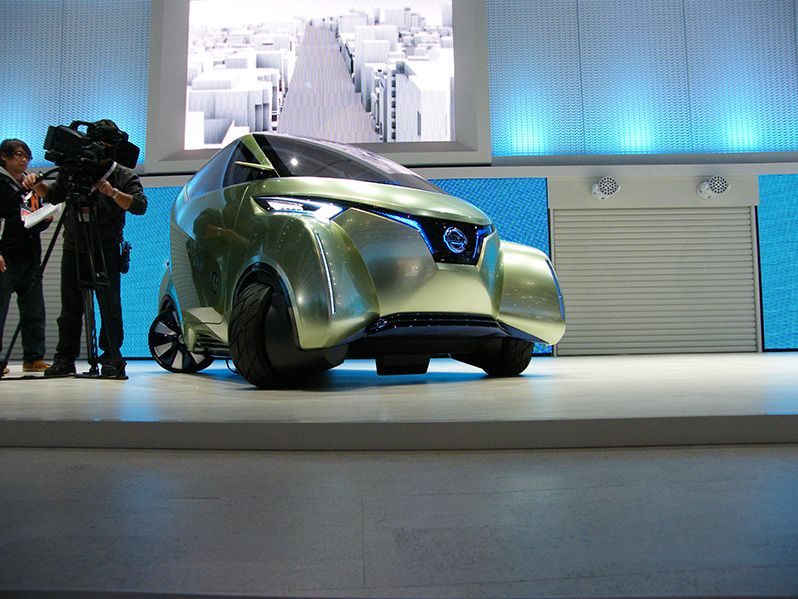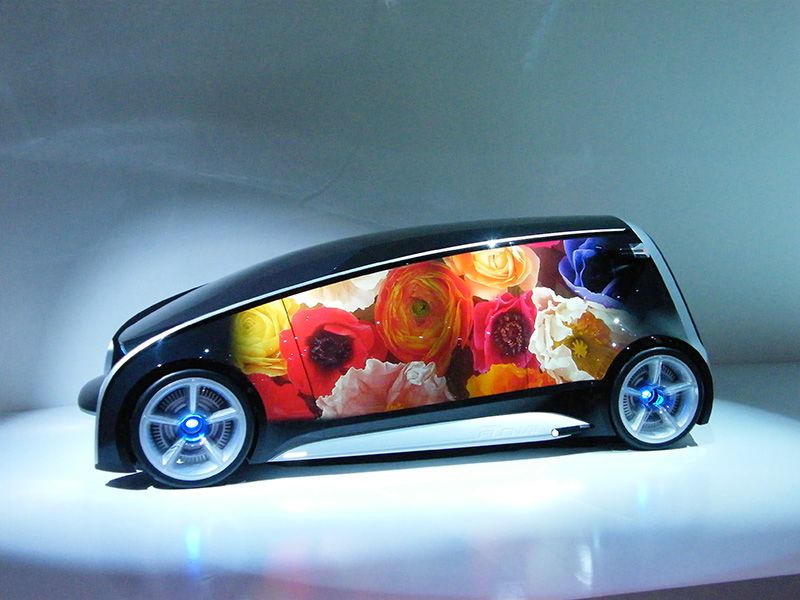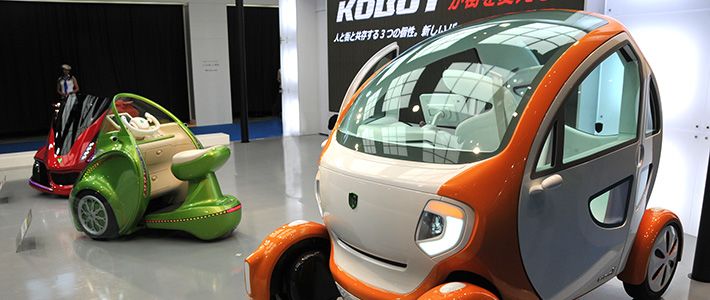
Competition Sparks a New Generation of Electric Vehicles
Culture- English
- 日本語
- 简体字
- 繁體字
- Français
- Español
- العربية
- Русский
Cars Geared to Changing the World
The 2011 Tokyo Motor Show, hosted by the Japan Automobile Manufacturers Association, brought together 176 exhibitors from 13 countries under the theme “Mobility can change the world.” On display at the event was an array of environmentally friendly vehicles that included electric vehicles, hybrid cars, and fuel-cell-powered cars, as well as many gasoline-powered vehicles that are more fuel efficient thanks to improvements in technology. JAMA also established “Smart Mobility City 2011” as the themed project for the motor show to showcase next-generation automobiles and the social systems with which they interact. The smart mobility theme led to the appearance of some companies that had not participated in past motor shows, including major house builders and manufactures of facilities equipment and related products. These companies set up booths to display their ideas for frameworks for mobility and for new types of social living.
EVs are already on the market in Japan, serving as a fundamental mobility technology. This is why the emphasis at the latest Tokyo Motor Show was not so much technological innovation as ideas for new uses and lifestyles that best take advantage of the capabilities specific to EVs.
Smaller, Safer, and Smarter EVs
One example of a new EV-related initiative displayed at the motor show is the Home Energy Management System project spearheaded by Mitsubishi Motor Corporation, which launched its i-MiEV plug-in EV in 2009. The HEMS project involves incorporating people’s EVs into their household electricity consumption and managing that overall consumption in a way that makes everything visible. Mitsubishi Motor also displayed an EV converted into a mobile coffee stand using electricity from the lithium-ion battery built into the vehicle for its coffee business.
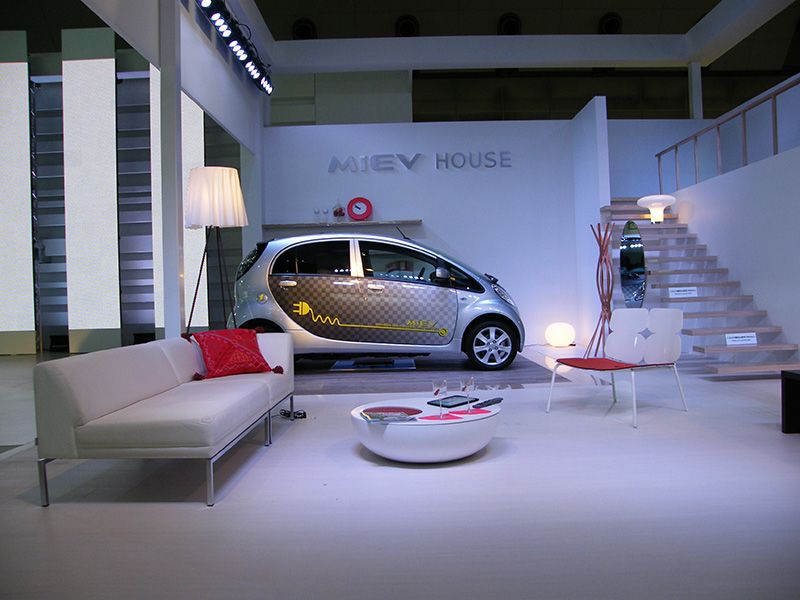 Mitsubishi’s i-MiEV plug-in EV.
Mitsubishi’s i-MiEV plug-in EV.
The idea of using EVs not only for mobility but also as an electricity source got a fresh look after the March 11, 2011, earthquake and tsunami that struck Japan.
Nissan Motor Co., Ltd. unveiled a system that can provide electricity for household use from the battery of the Nissan Leaf, an EV now on the market. The company also presented its Pivo 3 concept car as the basis for a future style of mobility. One smart feature of the Pivo 3 is a futuristic parking-lot function called Automated Valet Parking that allows the car to automatically park and recharge itself after the driver exits the vehicle. The car can then be summoned by the driver, using a cell phone or smart phone, so that it automatically pulls up at the parking lot exit. On top of those features, Pivo 3 has a minimum turning radius of just two meters, which means it can perform a U-turn on a street that is only four meters wide. In these ways, the concept car is designed to suit city commuters by operating well in confined spaces.
Another showcased product with a tight turning radius is the highly maneuverable Q-Concept, an ultracompact vehicle from Suzuki Motor Corporation. The vehicle, which is just 2.5m long and 1.3m wide, has a 10km driving range. The perfectly round doors makes an impression as they swing open to reveal a roomy cabin, and the driver’s seat pivots to make it easy to get in and out, even in tight spaces. Suzuki’s booth at the motor show included the two-seat models featured on the main stage, as well as displays of the mock-ups for a small transport model with just one seat and trunk space in the back and a parent-friendly vehicle with a driver’s seat and two child seats in the back.
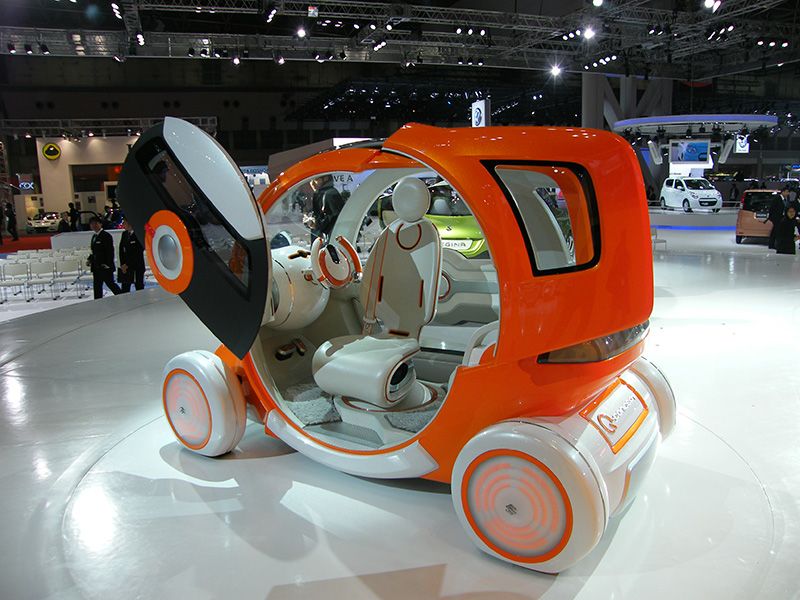 Suzuki Motor’s ultra-compact Q-Concept vehicle.
Suzuki Motor’s ultra-compact Q-Concept vehicle.
An even smaller vehicle than the Q-Concept is the Pico from Daihatsu Motor Co., Ltd., a EV designed for commuters that is just 2.4m long and 1m wide. The Pico is equipped with a driver’s seat and one more seat in the back, offering a style of mobility somewhere between a compact car and an electric-powered bicycle. It can reach a top speed in standard mode of 50kph, but in places with many pedestrians or where safety is a concern the vehicle can switch to a low-speed mode, with a maximum speed of 6kph. The Pico is also fitted with an LED panel that wraps around the middle of the entire vehicle to alert other vehicles and people in the vicinity to its presence, flashing red to issue a warning and green when it is moving at slow speed.
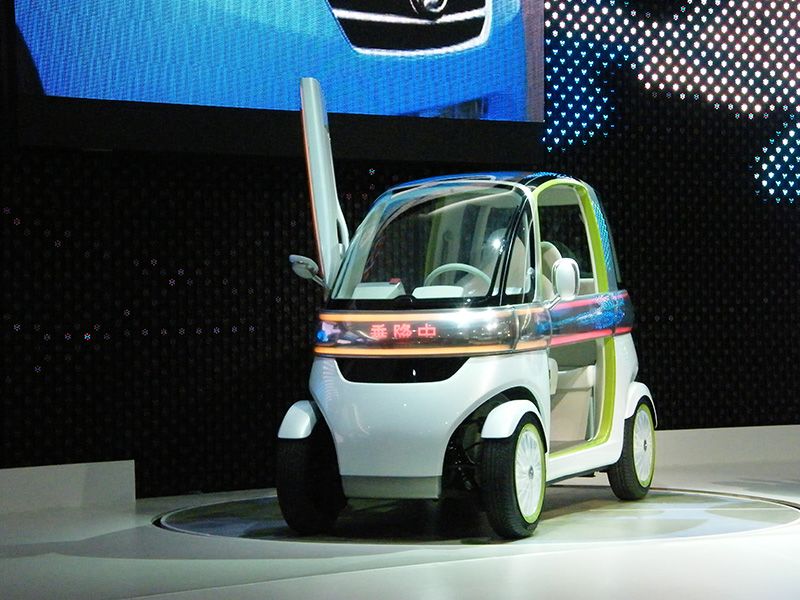 Daihatsu’s EV for commuters: the Pico.
Daihatsu’s EV for commuters: the Pico.
The Future on Display
Honda Motor Co., Ltd., for its part, used the Tokyo Motor Show as an opportunity to highlight examples of EVs that are compatible with other mobility options. The company unveiled its Micro Commuter Concept, an EV that can be used with other mobility vehicles. For instance, it can share a battery with the Townwalker, a four-wheel electric scooter perfectly suited to urban mobility, and it can also carry a fold-up electric motorcycle called the Motor Compo. The Micro Commuter Concept body is smaller than that of a compact car, offering the unique seating arrangement of a driver in the front and two passengers in the rear. Instead of a steering wheel, the vehicle features “twin lever steering,” operated using two joystick-like devices. Honda has been researching the concept of twin lever steering since 2003 as a way to reduce accidents caused from improper steering-wheel use and has also incorporated this new steering system into its EV-Ster sports car concept model.
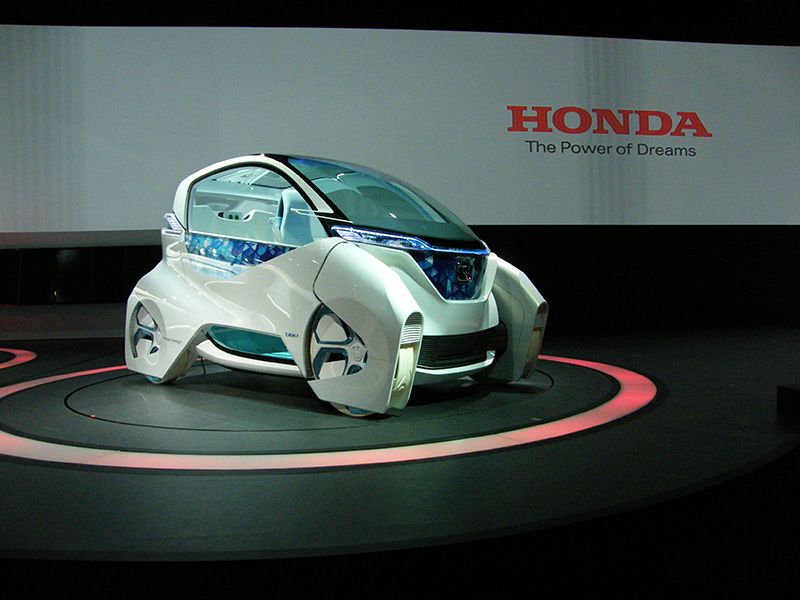 Honda’s concept model EV: the Micro Commuter Concept.
Honda’s concept model EV: the Micro Commuter Concept.
A wide variety of EVs were on display at the Tokyo Motor Show but one that really stood out was the Fun-Vii concept model from Toyota Motor Corporation. The entire outside body of the vehicle is covered with a display panel, allowing its colors and design features to be customized at will. There is a display covering the vehicle’s cabin too, allowing occupants to freely adjust the interior design depending on their mood. This ability to make all sorts of aesthetic adjustments, much like a smartphone, is a fascinating aspect of this concept vehicle. As President Toyoda Akio emphasized at the press conference to unveil the concept model, the Fun-Vii embodies the dreams and joy that motor vehicles can offer.
Among Asian motor shows the events in India and Beijing are increasingly in the spotlight, but Tokyo Motor Show continues to play a crucial role as the showcase for cutting-edge, environmentally friendly cars. The motor show’s status reflects the fact that Japanese companies have been in the lead when it comes to environmental technologies and EV development. After seeing the many futuristic new vehicles on display at the recent Tokyo Motor Show, one can only hope that they will be on city streets throughout the world soon.
(Originally written in Japanese by Hayashi Aiko.)Suzuki Tokyo Motor Show Japan Automobile Manufacturers Association (JAMA) electric cars EV hybrid cars fuel cell battery cars fuel consumption performance i-MiEV Mitsubishi Motor Corporation Batteries Nissan Motor Company LEAF Daihatsu Honda Motor Co. Ltd. Toyota Motor Corporation Toyota Fun-Vii automobile
